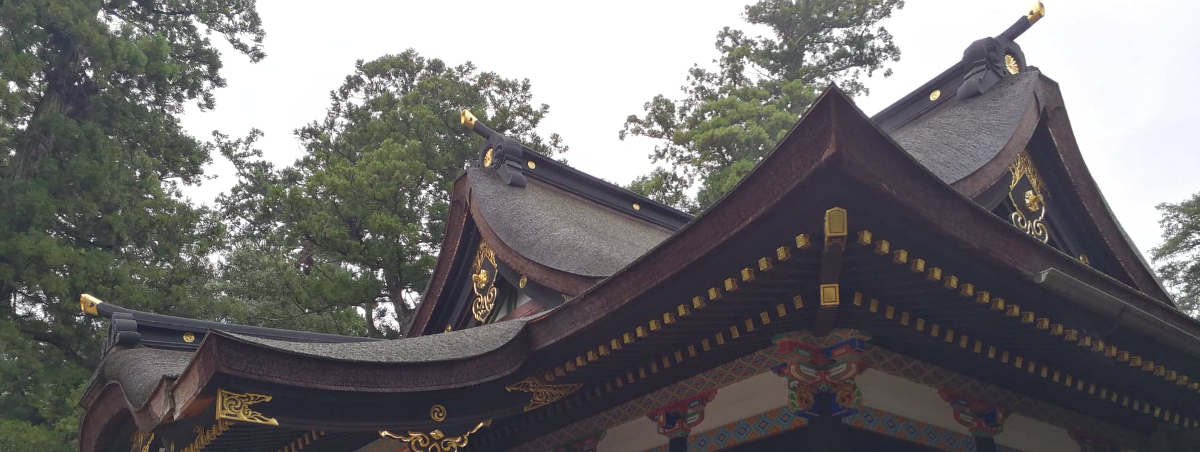October 4 2023
NHK ETV “Shumidoki!” Program
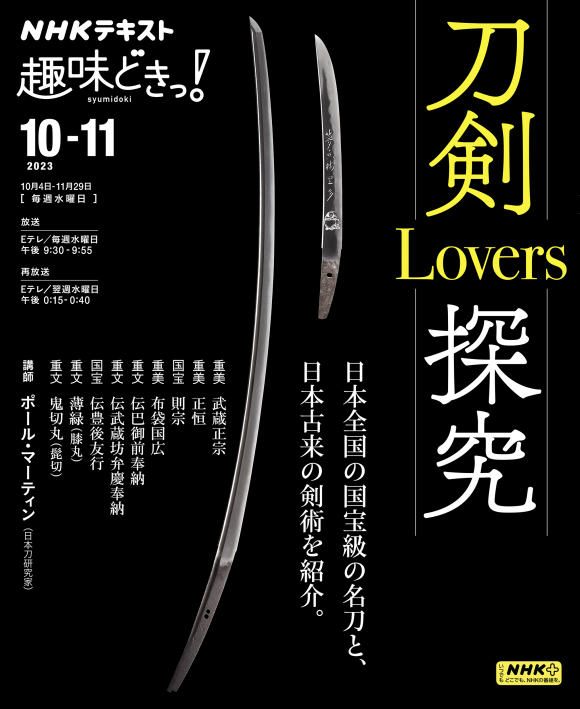
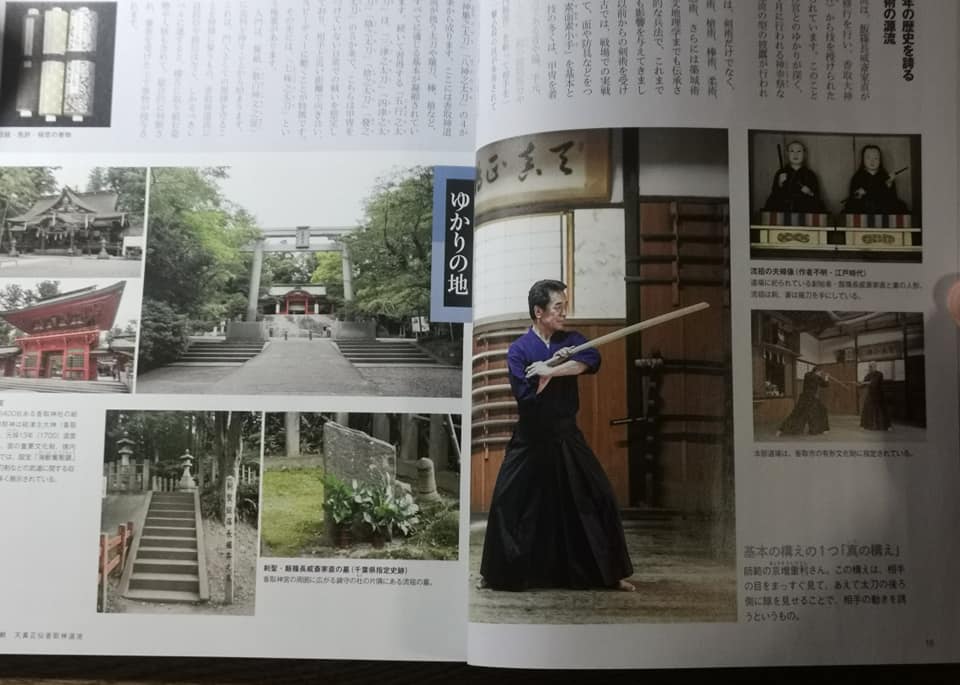
Tenshinsho-den Katori Shinto-ryu kenjutsu (swordsmanship) as demonstrated by the shihan of our tradition was featured in this NHK program
“Shumi Doki! Touken Lovers Tankyu” episode 1
22:00 ~ 22:59
NHK BS Premium, (Fri) March 19, 2021
A feature magazine from NHK Texts on Japan’s classical martial arts and swords for the program has also been released.
March 2021
NHK BS Premium “Meikyo Shisui: Bu no Kamiwaza” program
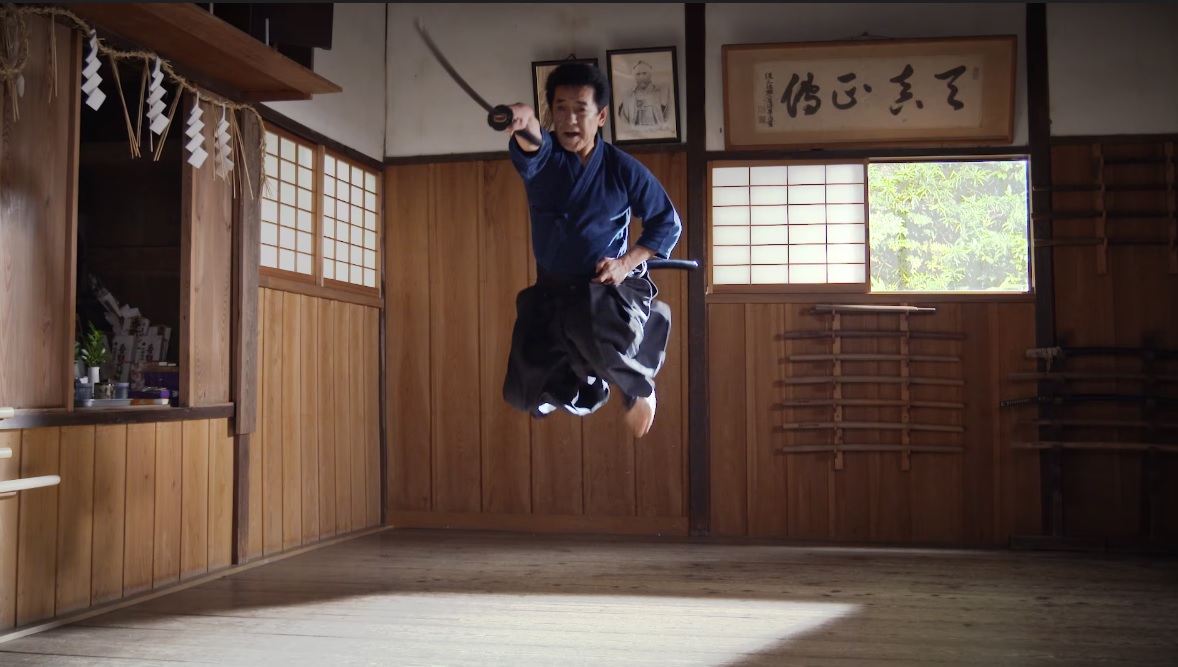
Tenshinsho-den Katori Shinto-ryu iai (sword drawing) as demonstrated by the shihan of our tradition was featured in this NHK program
“Meikyo Shisui: Bu no Kamiwaza” episode 1
22:00 ~ 22:59
NHK BS Premium, (Fri) March 19, 2021
March 2021
Article introducing Katori Shintō-ryū in Katori City Monthly Information Newsletter
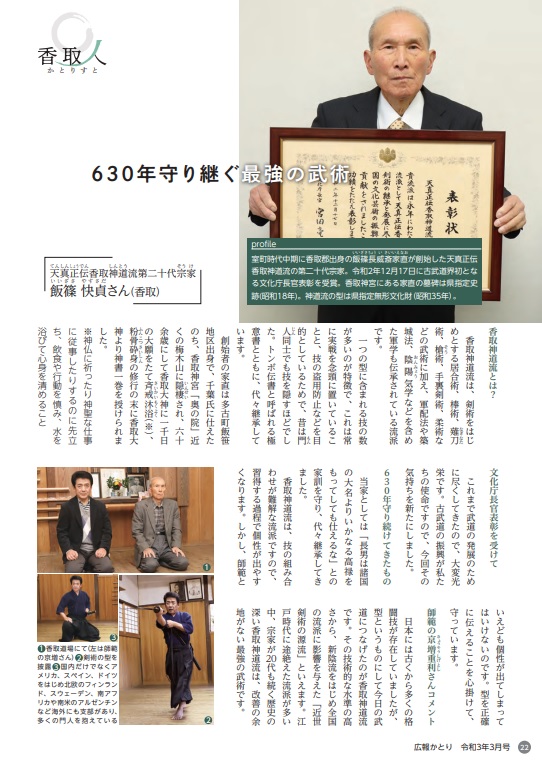
An article on the Commissioner of the Agency for Cultural Affairs Award last year was included on page 22 of this month’s Katori City Monthly Information Newsletter. The newsletter can be viewed from the Katori City Hall website here:
http://www.city.katori.lg.jp/smph/government/koho/koho_web/koho_back02/koho_2103.html
Katori City Monthly Information Newsletter, March 2021:
Katori People Series
The Greatest of Martial Arts Transmitted for 630 Years
Iizasa Yasusada-san (Katori resident)
Tenshinshō-den Katori Shintō-ryū 20th generation headmaster
Profile
The 20th generation headmaster of the Tenshinshō-den Katori Shintō-ryū, created by Iizasa Choisai Ienao from Katori County in the mid Muromachi period. Received the first Commissioner of the Agency for Cultural Affairs Award in the classical martial arts world on December 17, 2020. Ienao’s grave within Katori Jingu shrine was designated a prefectural historical relic in 1943, with the forms practiced by the school designated a prefectural intangible cultural asset in 1960.
What is Katori Shintō-ryū?
Katori Shintō-ryū is a tradition that transmits martial arts including kenjutsu (swordsmanship), iaijutsu (sword drawing), bōjutsu (staff), naginatajutsu (halberd), sōjutsu (spear), shurikenjutsu (throwing spike) and jūjutsu (unarmed combat), along with strategic studies such as gunbaihō (direction of troops using a war fan), chikujōhō (fortifications and encampment) and onmyō kigaku (study of yin/yang and the flow of energy).
It is characterized by the large number of techniques in each kata (practice form) containing a large number of techniques with the needs of real combat in mind, as well as to prevent the techniques from being stolen, with techniques even hidden from other practitioners of the same school long ago. We have transmitted these as well as secret manuscripts called tonbo densho through the generations.
The founder Ienao was born in Iizasa in Tako town, and served the Chiba clan before going into seclusion in Baibokuzan, a hill covered in plum trees near the Oku-no-in (inner sanctuary) of Katori Jingu shrine, where at over the age of 60 he prayed to the deity of the shrine for a 1000 days and engaged in spiritual ablutions (curbing one’s eating/drinking and actions and cleansing oneself in water to purify oneself mentally and physically before prayer or engaging in spiritual work) and extraordinarily intense training, and was awarded a divine book on strategy by the deity of the shrine.
On receiving the Commissioner of the Agency for Cultural Affairs Award
Having have served in the development of the Japanese martial arts to date, it is a great honour to receive this award. The promotion of the classical martial arts is our duty, and this award has renewed our determination toward this goal.
Tradition transmitted for 630 years
Our family has upheld a family code that states “No eldest son shall serve any lord, no matter what the stipend” throughout the generations, enabling us to transmit the tradition to date.
Katori Shintō-ryū is a complex art technically, making it easy for individuals to express idiosyncrasies in their practice. However, even the shihan (teaching masters) cannot have those kinds of idiosyncrasies. We are striving to maintain our tradition’s forms correctly.
Comment from Shihan (teaching master) Kyōsō Shigetoshi-san
While Japan had a large number of combatives from ancient times, Katori Shintō-ryū formulated them as kata (forms), thereby establishing the basis for what today is referred to as budo (the Japanese martial arts and ways). Based on the art’s technical level, it can be referred to as the “source of pre-modern Japanese swordsmanship”. While many traditions became extinct in the Edo period, Katori Shintō-ryū has a great amount of history, has been transmitted for 20 generations, and has no room for improvement. It is the greatest martial art.
Photo 1: At the Katori dojo (with Shihan, Kyōsō Shigetoshi-san on left)
Photo 2: Demonstrating kenjutsu kata
Photo 3: The tradition is taught here in Japan, as well as at branches in the U.S., Spain, Germany, Finland, Sweden, South Africa and Argentina, with a large number of practitioners.
December 2020
Agency for Cultural Affairs Commissioner’s Commendation Award for 2020
I would like to express my sincere gratitude upon being awarded the prestigious Agency for Cultural Affairs Commissioner’s Commendation Award. I also express my thanks to the practitioners of Katori Shinto-ryu and the individuals involved in Japan’s classical martial arts who support this tradition. It is my intention that Tenshinsho-den Katori Shinto-ryu continues to be transmitted in the Katori region to posterity, and that we are able to further contribute to the spread and promotion of Japan’s classical martial arts.
Iizasa Yasusada, 20th headmaster Tenshinsho-den Katori Shinto-ryu
